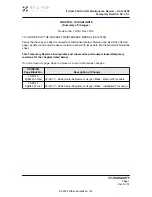
6
3D Pattern Cut Optimisation (3DP)
– the latest generation of wings
require a new fabric panel pattern and cutting system. Creating separate
panels for each of the sections at the front of the wing means the sail
fabric is more taut and crease-free. During the cutting, the optimal
orientation of the fabric section is selected, depending on its final
location. If the fabric pattern is properly aligned with the axes of load, it
suffers less deformation after repeated use, to the long-term benefit of
the leading edge.
3D Leading Edge (3DL)
- adding an extra seam to the longitudinal
axis of the glider helps, on the one hand, give more consistency and
volume to the profile (a more efficient 3D contour) and on the other, joins
and shapes the leading edge panels. The fabric is guided by the panel
position to ensure fewer creases and better load distribution. The result
is a cleaner profile, which benefits the wing in terms of performance and
durability.
Drag Reduction Structure (DRS)
- the trailing edge has been reinforced
with small ribs in order to distribute the pressure more evenly. This results
in excellent manoeuvrability and greater control and precision.
Reflex System Profile (RSP) -
with the RSP the engine does not need
much power to achieve greater thrust, resulting in less consumption,
more autonomy, less need for power, better durability, mechanical
efficiency and increased performance.
The use of these technologies is a big technological leap forward in
building wings and a big improvement in flight comfort.
For the construction process of the KOUGAR 3 we use the same criteria,
quality controls and manufacturing processes as in the rest of our range.
From Olivier Nef’s computer to fabric cutting, the operation does not
allow for even a millimetre of error. The cutting of each wing component
is performed by a rigorous, extremely meticulous, automated computer
laser-cutting robotic arm.
This program also paints the guideline markers and numbers on each
individual fabric piece, thus avoiding errors during this delicate process.
The jigsaw puzzle assembly is made easier using this method and
optimises the operation while making the quality control more efficient.
All Niviuk gliders go through an extremely thorough and detailed final
inspection. The canopy is cut and assembled under strict quality control
conditions facilitated by the automation of this process.
Every wing is individually checked with a final visual inspection.
The fabric used to manufacture the glider is light, resistant and durable.
The fabric will not experience fading and is covered by our warranty.
All lines are made of unsheathed Technora.
The line diameter has been calculated depending on the workload and
aims to achieve the required best performance with the least drag. The
sheath protects the line cores from UV rays and abrasions.
The lines are semi-automatically cut to length and all the sewing is
completed under the supervision of our specialists.
Every line is checked and measured once the final assembly is
concluded.
Each KOUGAR 3 is packed following specific maintenance instructions
as recommended by the fabric manufacturer.
Niviuk gliders are made of premium materials that meet the requirements
of performance, durability and certification that the current market
demands.
Information about the various materials used to manufacture the wing
can be viewed in the final pages of this manual.
1.5 ELEMENTS/COMPONENTS
The KOUGAR 3 is delivered with a series of accessories that will greatly
assist you in the maintenance of your paraglider:
- A Koli Bag. This bag is large enough to hold all equipment comfortably
and with plenty of space.
- An inner bag to protect the wing during storage and transport.
Summary of Contents for KOUGAR 3
Page 1: ...KOUGAR 3 User s manual ...
Page 23: ...24 10 3 RISERS PLAN ...
Page 24: ...25 10 4 SUSPENSION PLAN ...
Page 28: ...29 KOUGAR 3 16 KOUGAR 3 18 11 CERTIFICATION ...
Page 29: ...30 KOUGAR 3 20 KOUGAR 3 23 ...
Page 30: ...31 KOUGAR 3 25 KOUGAR 3 28 ...
Page 31: ......




































